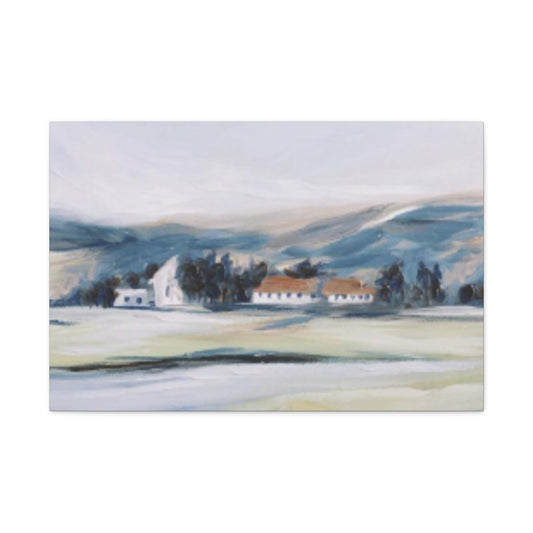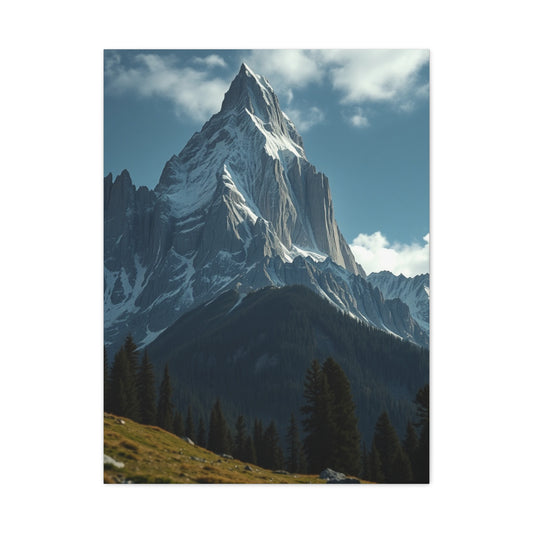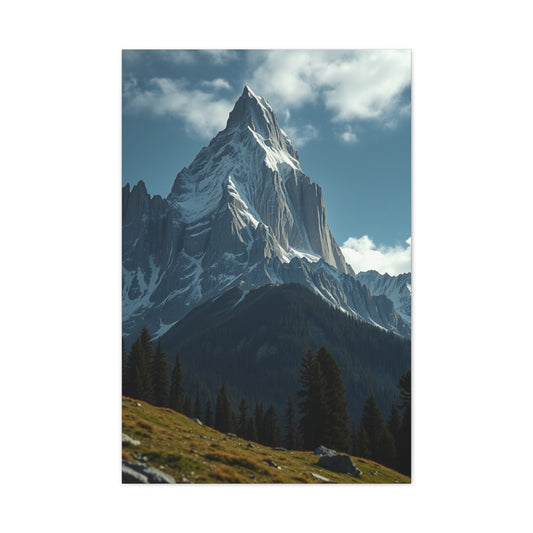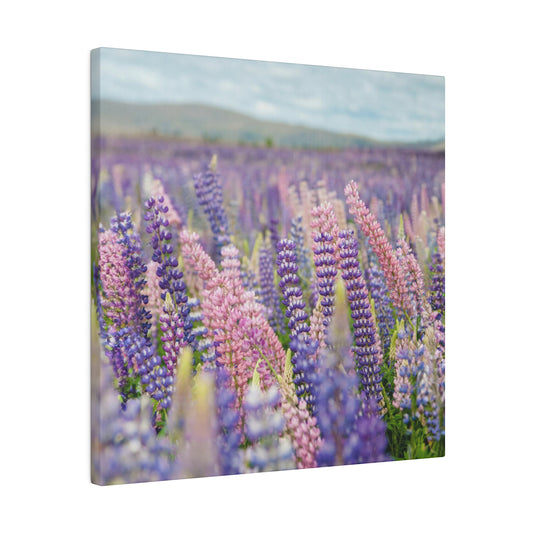The phrase "Mid-century modern" has become synonymous with timeless style, clean lines, and functional beauty. This design style, which emerged in the mid-20th century, captures an elegant yet accessible aesthetic that effortlessly blends sophisticated form with practicality. Mid-century modern décor was born in an era of great change, where new materials, technologies, and innovative thinking reshaped the world. As such, it is a design style that is not just about looks, but about the ideology of creating a balanced and functional space that still feels welcoming and full of character.
Though the modern interpretation of Mid-century style often leans into neutral tones and minimalist sensibilities, the original era was bold, colorful, and full of life. These bright hues, geometric shapes, and sleek lines were inspired by the optimism of the post-war world and the growing fascination with technology, space exploration, and modern living. Today, Mid-century modern is more popular than ever, yet its interpretation has evolved, creating unique opportunities for blending vintage pieces with contemporary trends.
|
Related Catagories: |
An essential aspect of achieving the ultimate Mid-century modern space is selecting the right wall art. Art is a key component that ties the room together, offering both an emotional connection and visual harmony. It not only fills the space with color and texture but also reflects the values and personality of the era. Whether you lean into the bold, eclectic roots of the Mid-century period or prefer a more minimalist approach, the right wall art can enhance your space and bring your vision to life.
In this guide, we'll explore how to select vintage-inspired wall art that complements a Mid-century modern interior. From vibrant hues to future-forward designs, we’ll cover how to incorporate wall art that enhances your space with style and nostalgia.
The Legacy of Color: How to Incorporate Bold Hues
Mid-century modern design is known for its use of vivid colors, which brought energy, warmth, and an air of playfulness to otherwise sleek and simple spaces. While contemporary interpretations of this design style often favor neutral tones—think muted grays, whites, and tans—the original Mid-century era embraced rich hues. Bright oranges, deep reds, mustard yellows, turquoise blues, and pastel pinks were all incorporated into the design palette, creating dynamic visual contrasts.
In selecting wall art for your Mid-century modern space, think about the colors that defined the period. When choosing artwork, opt for pieces that incorporate bright and bold colors or abstract shapes. Art prints that feature these vibrant tones can help create a lively focal point in any room, reflecting the spirited essence of Mid-century modern design. For example, a wall art piece featuring geometric shapes in contrasting colors, or an abstract painting in shades of teal and orange, will infuse your home with the same sense of energy and optimism that defined the period.
Minimalism and Functionality: The Art of Keeping It Simple
One of the standout features of Mid-century modern design is its ability to combine simplicity with beauty. Minimalism in the Mid-century sense didn’t mean sacrificing personality or warmth—it was about creating clean, open spaces that embraced functionality. The furniture was often low-profile, with sleek lines and an emphasis on comfort. In terms of wall art, the focus was on clarity and purpose. Art was meant to serve a functional role within the space, adding visual appeal without overwhelming the room.
When selecting wall art for a minimalist Mid-century modern space, focus on clean lines, geometric shapes, and simple yet striking compositions. Artworks that echo the minimalist ideals of the period—such as abstract pieces or prints featuring bold lines and muted backgrounds—will complement your space. Remember, the goal is not to overcrowd the room with too many pieces but rather to incorporate a few standout artworks that elevate the design without compromising the room's open, airy feel.
Nostalgia and the Space Age: Adding Retro Futurism to Your Home
The 1950s and 1960s were decades marked by both excitement and uncertainty, particularly when it came to new technologies and the space race. Mid-century modern design often reflected this fascination with the future, incorporating shapes and patterns that conveyed both a sense of awe and apprehension. Popular culture in this era, from The Jetsons to Star Trek, captured the imagination of the masses with its optimistic view of a future shaped by technological advancement.
To infuse this retro-futuristic style into your Mid-century modern home, consider incorporating vintage posters or space-inspired artwork into your walls. NASA-inspired prints, abstract designs mimicking the shapes of rockets and stars, or art featuring futuristic typography will add an exciting, dynamic quality to your décor. Such pieces not only recall the spirit of the time but also bring a touch of imaginative vision to your interior, reflecting the innovative thinking that defined Mid-century modernism.
Vintage Charm: Integrating Authentic Mid-Century Wall Art
While modern reproductions and retro-inspired designs are easily accessible, there’s something incredibly special about incorporating genuine vintage Mid-century pieces into your home. Authentic vintage wall art captures the true essence of the era, often showcasing the work of renowned artists or capturing historical moments in time. However, authentic vintage art doesn’t have to mean breaking the bank—often, you can find affordable pieces through thrift stores, antique markets, or online marketplaces.
Vintage photography, old advertisements, and original artwork from the Mid-century period are great options for adding character and authenticity to your space. A vintage black-and-white photo or a framed advertisement from the 1950s can evoke a sense of nostalgia while also adding a timeless touch to your design. If you can’t find authentic vintage pieces, look for prints that echo the same qualities—geometric abstraction, bright contrasting colors, and bold compositions.
The Perfect Art for Every Room
Wall art has the power to transform any room in your home, particularly in a Mid-century modern setting. Whether you're designing a living room, dining area, or bedroom, carefully chosen artwork can serve as the focal point of the space, unifying the design and enhancing its atmosphere.
For example, in the living room, a large statement piece such as an abstract canvas or a colorful geometric print can anchor the room and create an inviting atmosphere. In the bedroom, consider selecting a piece that complements the calm and serene vibe of the room. Opt for soft, pastel-colored art, such as a simple abstract painting or a minimalist line drawing. The goal is to create a harmonious flow from one room to the next, with wall art acting as the visual thread that ties the entire space together.
Achieving a Timeless Look
Mid-century modern design is a timeless aesthetic that has endured for decades, and its popularity shows no sign of fading. Whether you are completely renovating your home or just looking to add a few touches of Mid-century style, wall art is an essential tool in achieving this iconic look. By carefully selecting vintage-inspired art pieces, you can bring the vibrancy, elegance, and functionality of the Mid-century period into your home. With the right balance of color, design, and nostalgia, your space can truly reflect the beauty of this enduring design style while remaining fresh and relevant in today’s world.
By selecting wall art that incorporates bold colors, minimalist forms, and futuristic elements, you can ensure that your Mid-century modern home feels both nostalgic and contemporary. The beauty of this style is in its ability to stand the test of time, blending function and form in a way that continues to captivate. So, whether you’re embracing the original, vibrant hues of the era or opting for sleek, minimalist lines, there’s a wealth of Mid-century modern wall art that can transform your space into a design masterpiece.
A Timeless Approach to Interior Design
When we think of Mid-century modern design, one of the first things that often come to mind is its fearless approach to color. This era, spanning roughly from the 1940s to the 1960s, celebrated bold and vibrant hues, which remain a key characteristic of the style even today. Unlike contemporary designs that tend to favor muted and neutral tones, the Mid-century modern era embraced a spectrum of colors that were meant to energize and elevate the spaces they inhabited. From rich oranges and mustard yellows to soft teals and pastel pinks, the color palettes of Mid-century modern design were vibrant, dynamic, and full of life.
The use of color during the Mid-century modern period was not just about aesthetics; it was also about embracing optimism, liberation, and a sense of fun. After the war years, the world saw a shift in its cultural attitudes, and this new spirit of freedom was reflected in the interiors of homes. Walls, furniture, and decorative pieces were all infused with bold and experimental colors that brought a sense of joy and lightness to everyday life.
Whether you are looking to recreate this iconic style in your own home or simply want to incorporate a touch of Mid-century modern flair into your space, wall art is one of the best ways to bring this vision to life. By embracing the colors of the past, you can capture the essence of Mid-century modern design, infusing your home with vibrancy and energy. Let’s explore how you can achieve this with the right selection of wall art and design choices.
The Color Palette of Mid-Century Modern Design
To truly understand how to embrace bold colors in Mid-century modern interiors, it’s important to examine the defining color palette of the era. Mid-century designers were known for their playful use of contrasting hues and unexpected pairings, creating a dynamic and stimulating visual experience. The key colors of the time included rich, earthy tones, pastels, and bright accent colors, all of which were carefully balanced to achieve harmony within the space.
One of the most iconic color combinations from this era involved pastels such as soft pinks, mint greens, and teals, paired with vibrant and warm tones like mustard yellows, oranges, and deep reds. The contrasts between these softer and more intense shades gave rooms a sense of balance, while also creating a lively and inviting atmosphere. The use of contrasting colors wasn’t meant to overwhelm, but rather to energize the space and give it a sense of movement.
In addition to the more obvious pairings, Mid-century modern designers also introduced a number of muted earth tones, like olive green, walnut brown, and burnt sienna, which grounded the overall design while allowing the brighter colors to pop. These earthy hues were often used for furniture pieces, wood paneling, and other structural elements in the home, providing a natural and harmonious contrast to the vibrant hues found in wall art and decorative accessories.
When selecting wall art for your own Mid-century modern-inspired space, think about incorporating these color themes. Whether you choose abstract art, vintage advertisements, or mid-century graphic design, the key is to embrace a rich, playful color palette that reflects the optimistic energy of the era.
The Role of Wall Art in Mid-Century Modern Design
Wall art is an essential element in any Mid-century modern home, as it serves as a focal point that adds both visual interest and personality. One of the defining features of Mid-century modern wall art is its bold use of color. Art from this era often featured geometric patterns, abstract shapes, and minimalistic designs, but it was always alive with color.
When decorating with wall art in the Mid-century style, it’s important to select pieces that complement the overall aesthetic of the space. Look for art that incorporates the same playful color contrasts that were so popular during the period. Pieces with abstract designs and clean lines are particularly effective, as they evoke the minimalist and functional aspects of Mid-century modern design while still offering a bold splash of color. Think of geometric shapes in vibrant yellows, oranges, and blues, paired with softer pastel tones of mint green or blush pink.
Vintage advertisements and posters from the Mid-century era are also a great choice for wall art. These iconic pieces often feature bold, graphic designs in bright colors, capturing the essence of the time. Whether it's a classic ad for a soft drink, a travel destination, or a product from the 1950s, these artworks bring a nostalgic touch to your home while still embracing the use of bold, cheerful colors.
Bringing the Spirit of Mid-Century Colors into Modern Spaces
While Mid-century modern design may have originated several decades ago, its appeal continues to resonate with contemporary interiors. Today, many homeowners and designers are rediscovering the beauty of this vibrant and optimistic color palette and incorporating it into their homes. The key to achieving this in a modern context is striking the right balance between the past and present.
When adding bold Mid-century colors to your space, you don’t necessarily have to replicate every detail of the original design. Instead, you can select specific elements that capture the essence of the era while still feeling fresh and contemporary. For example, consider incorporating a large statement piece of wall art that features vibrant colors like teal, mustard, and coral. Pair this with a neutral backdrop, such as white or soft grey, to allow the colors to stand out and create a striking focal point.
Alternatively, you can experiment with accent pieces like throw pillows, rugs, and furniture in the signature Mid-century color palette. These elements can complement the wall art without overwhelming the space. For instance, you might add mustard yellow cushions to a neutral sofa or hang a mint green abstract painting on a light grey wall.
The beauty of Mid-century modern design lies in its versatility. By embracing bold, vintage-inspired colors, you can breathe new life into any room of your home, creating a space that feels lively, inviting, and full of character.
Choosing the Right Wall Art for Your Mid-Century Modern Space
When it comes to selecting wall art for your Mid-century modern-inspired home, there are a few tips to keep in mind to ensure that the pieces you choose align with the overall aesthetic. Start by considering the size of your wall and the space around it. Large, bold pieces can make a dramatic impact on empty walls, while smaller works can be grouped together to create a dynamic gallery wall.
Look for artwork that features geometric shapes, sharp lines, and abstract designs. These elements were central to the Mid-century modern style and help to reinforce the era’s focus on functionality, simplicity, and elegance. You might also want to incorporate artwork that features nature-inspired themes, as the Mid-century period was also influenced by organic forms and the beauty of the natural world.
The color palette of your wall art is also crucial. As mentioned earlier, the Mid-century color palette is full of contrasts, so don’t shy away from pieces that feature vibrant oranges, yellows, and teals. These bold colors can inject energy and warmth into your home. However, it’s important to balance these with more neutral tones or muted shades to ensure that the overall design remains cohesive and inviting.
Embracing Minimalist Playfulness in Mid-Century Modern Design
When it comes to home décor, minimalism often carries a reputation for being cold, sparse, or even uninspiring. However, Mid-century modernism brilliantly subverts this misconception, demonstrating that minimalism can be both functional and vibrant. Emerging in the 1950s and 1960s, Mid-century modern design embraced clean lines, practical furniture, and an overall uncluttered aesthetic. However, this approach to design was not without its distinctive flair. Far from being dull, Mid-century modernism blended simplicity with bold, colorful accents and unique design choices that made spaces feel both open and alive.
At the heart of Mid-century modernism is the belief that less is more—but that "less" doesn't mean sacrificing visual interest or energy. While the focus was on streamlined furniture and the avoidance of excessive ornamentation, the era embraced striking statement pieces and eye-catching colors. This balance between functional design and exciting visual appeal is what continues to make Mid-century modern interiors so timeless and universally loved. It’s a philosophy that, when applied thoughtfully, can transform any space into a stylish, dynamic haven. And when it comes to decorating a Mid-century modern home, wall art plays an essential role in achieving this balance.
Selecting Wall Art That Speaks to Minimalism's Bold Side
When decorating your Mid-century modern home with wall art, the objective is to align with the design philosophy of simplicity while still allowing for bold expressions of personality and style. The space should remain open and airy, but it can also be energized with artwork that adds depth, intrigue, and vibrancy without overwhelming the room. Wall art should function as both a design element and a focal point, contributing to the overall aesthetic without creating clutter.
To achieve this, focus on selecting art pieces that embody the minimalist ethos while incorporating vibrant colors, geometric forms, and abstract shapes. A well-chosen piece of wall art should evoke a sense of energy and balance, working with the room’s existing design to bring the space to life. The use of bold color contrasts, angular patterns, and dynamic compositions can help define the character of the space. These elements create visual interest while maintaining the openness that Mid-century modernism is known for.
One of the key principles when choosing wall art for a Mid-century modern home is the selection of pieces that offer a statement without overwhelming the space. This may mean opting for larger canvases or bold graphic designs, but keeping the number of art pieces to a minimum. By curating a small collection of impactful art, you ensure the room doesn’t become cluttered, but instead feels balanced, with each piece playing a significant role in the overall design.
Using Color and Form to Create Energy
In Mid-century modern design, color is essential in creating a sense of energy. While neutrals like white, gray, and wood tones dominate the backdrop, bright pops of color are often used strategically to add visual excitement and personality. When choosing wall art for your Mid-century modern living room, bedroom, or any other space, consider how colors can both contrast and complement each other.
Artworks featuring abstract shapes or geometric forms are ideal for a Mid-century modern aesthetic. Think of bold, primary colors like red, yellow, and blue, or earthy tones such as mustard, olive, or terracotta. These colors can be incorporated through graphic art, abstract landscapes, or contemporary pop art that captures the essence of the era. The use of vibrant hues against a neutral background can create a striking visual balance, giving the room energy and warmth without disrupting the minimalist approach.
For example, a piece featuring intersecting circles, clean lines, and a bright color palette can serve as a beautiful focal point in your space. Geometric patterns like squares, triangles, and chevrons can also tie together the modern aesthetic of the home, while still allowing for that playful pop of color and form that gives Mid-century modern design its personality. Abstract art in the style of the 1950s or 1960s can help bring a touch of nostalgia to your interior while remaining fresh and contemporary.
Emphasizing Functionality Without Sacrificing Style
One of the cornerstones of Mid-century modern design is the concept of "form follows function." In other words, every design element should serve a practical purpose while also contributing to the overall aesthetic. When selecting wall art, this means choosing pieces that are not just visually appealing, but also serve a function within the room’s design. The artwork should enhance the space’s atmosphere, making it feel cohesive and purposeful.
Rather than overwhelming the walls with too many smaller pieces of art, aim to create a few intentional, well-placed focal points. A large, single canvas can serve as a centerpiece, drawing the eye and creating an anchor for the room’s design. Alternatively, a triptych (three-panel) or symmetrical multi-panel canvas set can work wonderfully in larger spaces, breaking up the space in a visually interesting way while maintaining that minimalist feel.
Minimalist art is not limited to large, solid blocks of color or abstract shapes. It can also include designs with negative space, where the artwork allows the room to breathe and creates visual interest through subtlety. For example, a single line or an open space between elements can create an intriguing focal point without feeling cluttered. The key is to strike a balance between keeping the design simple while adding just the right amount of detail to keep things interesting.
Curating Your Wall Art: Quality Over Quantity
When decorating in a minimalist Mid-century modern style, one of the most important principles is to curate your wall art carefully. Choose pieces that stand out for their quality and impact, rather than opting for a large number of smaller, less significant works. Quality over quantity is crucial in maintaining the minimalist aesthetic while also injecting personality and character into the space.
|
Related Catagories: |
Instead of filling every wall with art, select one or two statement pieces that truly resonate with you and complement the space. A large canvas with a bold, abstract design can serve as the anchor of your room’s visual composition, while smaller, more subtle pieces can be arranged thoughtfully around it. Remember that the artwork should align with the overall mood of the room, whether you want to evoke serenity, vibrancy, or sophistication.
Bringing the Future into Your Home with Wall Art
The allure of space exploration, technological innovation, and the promise of a brighter future dominated much of the mid-20th century. This era, known as the Space Age, sparked an aesthetic revolution that blended both a sense of wonder and anxiety about the future. As new inventions like the television, microwave oven, and even the first moon landing captivated the imagination, the world of design embraced bold new ideas, futuristic shapes, and a sense of optimism mingled with uncertainty. The space-age style became an essential part of retro-futurism, where design and technology merged, creating a visual language that was equal parts futuristic and nostalgic.
For those looking to infuse their homes with the dynamic, imaginative energy of this era, incorporating wall art inspired by the Space Age and retro-futurism can provide the perfect focal point. From vintage NASA posters to prints influenced by early sci-fi television shows, retro-futuristic wall art offers both a whimsical nod to the past and a forward-thinking aesthetic that can elevate the atmosphere of any room. This style celebrates the idealism and adventurous spirit of the 1960s and 1970s, creating spaces that feel both nostalgic and avant-garde.
The Rise of Space Age Design
The mid-century modern design movement was deeply influenced by the Space Age. In a world where technological breakthroughs were happening at an unprecedented pace, the visual language of design reflected the excitement and uncertainty that came with it. Furniture, architecture, and wall art all embraced futuristic shapes—boomerangs, spheres, and sleek, aerodynamic lines that were meant to evoke the image of flying saucers, space stations, and high-tech gadgets. These elements were bold and innovative, reflecting an era where the boundaries of science, technology, and imagination seemed limitless.
At the same time, there was an underlying sense of anxiety, as the threat of nuclear war loomed large. Yet, rather than retreating into pessimism, the design world met these challenges with optimism and creativity. This era's designs often juxtaposed the promises of technological advancement with a sense of unease about what the future might hold, producing a rich and complex aesthetic that remains compelling today.
Retro-Futurism: A Style Ahead of Its Time
Retro-futurism as a design philosophy looks back at the past while simultaneously imagining the future. It draws from the aesthetic visions of the 1950s and 1960s, where designers and artists envisioned the future in bold, geometric shapes, metallic finishes, and a sense of space exploration. Wall art from this period reflects this forward-thinking mindset, featuring depictions of astronauts, rockets, planets, and space stations, often rendered in vibrant colors and abstract forms.
What makes retro-futurism so appealing today is its playful combination of old-fashioned optimism with modern technological imagination. It’s a visual manifestation of how people in the past viewed their future—a future where flying cars, moon bases, and advanced gadgets were just around the corner. Although we haven't quite reached those high-flying expectations, the aesthetic that emerged during this time remains iconic, with its clean lines, smooth curves, and bold contrasts still resonating in contemporary design.
The Space Age Aesthetic: Bold Colors and Geometric Shapes
One of the defining characteristics of Space Age and retro-futuristic design is the use of bold colors and geometric shapes. In wall art, this translates to vibrant hues like orange, turquoise, yellow, and purple, paired with clean, angular lines. These elements can create an eye-catching visual impact, making them ideal for living rooms, home offices, or even kitchens where you want to infuse energy and character.
Geometric shapes such as spheres, triangles, and chevrons were commonly used to represent the modern, futuristic outlook of the era. These shapes are not only visually striking but also evoke the sense of technology and innovation that defined the Space Age. When integrated into your wall art, they can help create a harmonious, forward-thinking atmosphere that celebrates the past while looking toward the future.
Retro-Futurism Meets Modern Minimalism
While retro-futurism is often associated with bold designs and vibrant colors, it can also blend seamlessly with modern minimalist aesthetics. You can create a stylish, contemporary space by pairing retro-futuristic wall art with sleek, modern furniture and neutral tones. This juxtaposition allows the artwork to stand out while maintaining an overall balanced and sophisticated feel.
For example, a retro-futuristic print featuring a stylized rocket ship or abstract planet can be the focal point of a minimalist living room. The vibrant colors of the artwork will pop against a neutral backdrop, creating an eye-catching visual contrast. By mixing these two design styles, you can create a space that feels both nostalgic and forward-thinking at the same time.
The Timeless Charm of Authentic Vintage Décor in Mid-Century Modern Homes
In the world of interior design, few styles possess the enduring appeal of Mid-century modern. Characterized by clean lines, functional form, and organic influences, this style remains a staple in homes seeking a timeless, yet contemporary, feel. While many people today can easily find replicas of Mid-century furniture and accessories, there's something truly special about owning authentic vintage pieces from the era. These genuine treasures, whether they are iconic furniture items or unique wall art, offer a sense of history and individuality that contemporary pieces simply can't replicate.
Vintage treasures hold an undeniable allure, especially when it comes to creating an authentic and nostalgic Mid-century modern home. The idea of incorporating original artifacts from the Mid-century period, whether it’s a vintage arc lamp, a classic turntable, or a distinctive satellite-style wall clock, carries with it a sense of nostalgia that transports homeowners to a different era. These pieces add not only functionality but also a piece of history that continues to tell a story.
When it comes to enhancing your Mid-century modern home with the perfect finishing touches, vintage wall art can be a transformative addition. Genuine Mid-century art is often vibrant, bold, and thought-provoking. Vintage photographs, original advertisements, and abstract paintings from the period add depth, personality, and an undeniable authenticity to your space. But even if you don’t have access to authentic vintage art, there are still plenty of ways to capture the essence of the era with modern reproductions or prints that evoke the same aesthetic.
The Enduring Allure of Vintage Mid-Century Art
Mid-century modern design is not just about furniture—it is an entire approach to living that includes thoughtful design choices in every aspect of the home, including wall art. Authentic Mid-century art can be transformative, introducing an organic feel into a space that is both retro and timeless. Iconic pieces like vintage abstract paintings, photographs of bygone times, or colorful mid-century posters continue to be revered by interior designers and collectors alike for their artistic value and historical significance.
Incorporating these original pieces into your home can breathe life into the space, providing an emotional connection to a bygone era. These vintage treasures are not merely decorative; they are windows into the past, each piece telling a unique story. Vintage Mid-century wall art can create a sense of nostalgia, taking you back to an era when art, design, and functionality seamlessly blended.
One of the best aspects of vintage Mid-century wall art is its ability to blend effortlessly with contemporary design elements. The bold patterns, geometric shapes, and earthy color palettes typical of the period create a striking contrast to modern minimalist interiors. This fusion of old and new brings out the best of both worlds, creating a visually stunning atmosphere that stands the test of time.
Authentic Mid-Century Modern Furniture: Complementing Your Art Collection
Vintage furniture plays a crucial role in crafting a Mid-century modern interior that feels cohesive, elegant, and inviting. The functional simplicity and understated elegance of classic pieces from this era naturally complement the art of the period. Whether you choose an authentic teak dining table, an iconic Eames lounge chair, or a vintage sideboard, each piece adds authenticity and character to your space.
While these original pieces may require more effort to find, the payoff is significant. Owning a genuine piece of Mid-century modern furniture not only enhances the overall aesthetic of your home but also provides a sense of authenticity that can’t be replicated by modern reproductions. These items are often built to last, making them valuable investments that only improve with age. As you carefully select each vintage item to fit within your design vision, you create a personal connection to the era, filling your home with stories of the past.
Vintage Photographs and Advertisements: A Glimpse into the Past
For many homeowners looking to embrace the Mid-century modern aesthetic, vintage photographs and advertisements are a fantastic way to enhance their design. These works often feature advertisements for household products, travel destinations, or iconic brands that defined the era. Vintage photographs, particularly those featuring everyday life or famous individuals, also provide a glimpse into the culture and societal changes that shaped the 1950s and 1960s.
These types of wall art not only reflect the graphic design principles of the time but also capture the spirit of the era. Advertisements from the mid-20th century, with their bold typography and stylized illustrations, add a playful yet nostalgic touch to your space. Photographs, on the other hand, can convey emotional depth and history, offering a window into a time when black-and-white photography was at its peak.
Pairing vintage photographs and advertisements with Mid-century furniture and décor can help create a harmonious and authentic living space. Whether framed in minimalist black or walnut frames, or presented in creative gallery arrangements, these works are often the perfect accent to a well-designed Mid-century modern room.
Capturing the Mid-Century Aesthetic with Modern Prints
While owning authentic vintage art pieces may not always be possible, modern prints can capture the essence of the era without sacrificing style. Numerous contemporary artists and printmakers have taken inspiration from Mid-century design, offering reproductions of classic works or new art that evokes the same visual appeal.
For those looking to replicate the visual style of the era without the cost of an original piece, these prints are a fantastic option. Many modern artists create prints that evoke the same bold geometric patterns, vibrant color schemes, and minimalistic sensibilities that define Mid-century art. These prints can mimic the works of iconic designers and artists such as Jackson Pollock, Mark Rothko, or Saul Bass, making them perfect for bringing the spirit of Mid-century modernism into your home.
Additionally, many printmakers incorporate retro typography, vintage-style illustrations, and abstract designs into their pieces, which complements the aesthetic of Mid-century modern furniture and accessories. Incorporating modern reproductions is a practical and stylish way to embrace the Mid-century aesthetic while staying within budget.
The Emotional Impact of Vintage Treasures in Your Home
Vintage pieces in your home evoke an emotional connection to the past, offering more than just aesthetic value. Whether it’s the warm nostalgia of a vintage painting, the intriguing history of an original turntable, or the unique craftsmanship of a retro wall clock, these items connect us to the past in a deeply personal way.
Owning and incorporating vintage Mid-century items into your home allows you to engage in a dialogue with history. Each piece has a story to tell, and its authenticity carries a weight that new pieces simply cannot. Displaying original art, furniture, or accessories gives you a chance to live alongside items that have endured decades of style and usage, giving your home a sense of continuity and rootedness.
Incorporating Mid-Century Art into Any Room
Whether you’re transforming your entire home into a Mid-century modern haven or simply adding a few pieces to a single room, wall art is essential to completing the look. The beauty of Mid-century modern design lies in its ability to blend with various styles while maintaining a distinct personality. It’s a timeless aesthetic that can be achieved with minimal effort, allowing you to infuse your home with personality and flair.
For your bedroom, consider hanging a vintage-inspired geometric print or an abstract painting that complements the room's color palette. In the living room, a large, striking piece of art can serve as the focal point of the space, drawing attention to the clean lines of your furniture. You can even introduce some playful touches with retro advertising posters or black-and-white photography, creating an eclectic yet cohesive atmosphere.
Final Thoughts: A Timeless Aesthetic for Any Home
The Mid-century modern aesthetic remains as relevant today as it was in the 1950s and 1960s. Its emphasis on clean lines, functional beauty, and expressive design has made it a lasting favorite in interior design. By carefully selecting the right wall art, you can transform any room into a Mid-century modern masterpiece, whether you're opting for vintage prints, bold color palettes, or retro-futuristic pieces.
Incorporating these art pieces into your home not only helps you stay true to the Mid-century aesthetic but also allows you to create a space that feels both nostalgic and forward-thinking. With the right mix of colors, styles, and materials, your home can become a tribute to one of the most iconic design movements of the 20th century, blending timeless elegance with modern flair. So go ahead and curate your space with wall art that reflects your personality and the unique charm of Mid-century modern design.




























